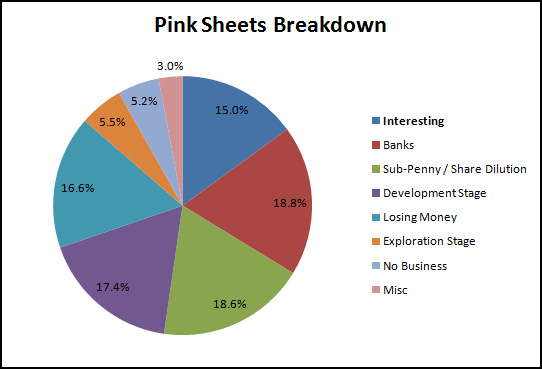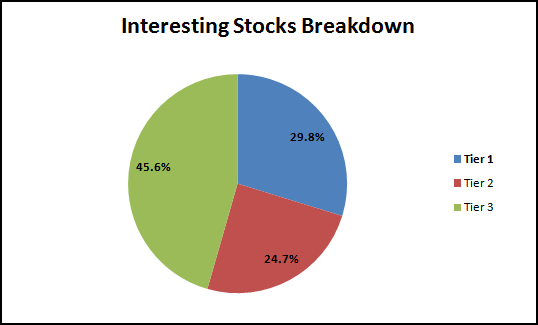As usual, a few of the best value investing links from the past two weeks:
Sears Holding Corp (SHLD)
Long. Sears is a company with a long brand history that has gone through its share of well known struggles over the past few years.
The stock, a holding company for the 2004 merger of Sears and Kmart, is headed by well-known financier Eddie Lampert of ESL Investments.
Other well-known long-term investors such as Bruce Berkowitz and the Tisch Family (of Loew’s fame) have a large stake as well. While the core business is struggling, the company is backed up billions of dollars of real-estate and other favorable assets, protecting the down-side.
While the stock has run-up since the original analysis, it is a great example of a sum-of-parts breakdown for a complicated company.
ITT Corp (ITT)
Work-out. Another conglomerate, ITT announced a split of the company into three operating businesses: Defense, Water, and Industrial Products.
Spin-offs have been proven to a profitable source of investment ideas, and the article does a great job of breaking down the individual business segments.
Rolling up the respective valuations into the core holding company doesn’t leave much margin of safety, but the new entities could be prime candidates for value investors.
I will be keeping a close eye industrial products segment, especially since the ‘new ITT’ is not as fancy as the other two divisions. This dynamic could lead to forced selling and a resulting attractive price.
Citigroup (C)
Long. After suffering through the financial crisis (including a government rescue and massive dilution for existing shareholders), Citigroup is now trying to move forward with a more conservative strategy and better risk management.
While outside of my circle of competence, there is no doubt that Citigroup has enormous global potential with operations in over 140 countries. Most of the toxic assets were spun-off into the Citi Holdings subsidiary, and the new bank is trying to stick to its core vanilla banking.
Using several optimistic assumptions (rise in ROA, positive valuation of Citi Holdings and tax assets) yields $0.80 EPS in 2014, or only 5.5x the current price.
While I normally like to look at historical earning power and not pay-up for growth, it is a compelling argument that is backed up other well-known value investors including John Paulson, Bill Ackman of Pershing Square, Bruce Berkowitz of Fairholme Capital, and David Tepper of Appaloosa Management, among others.
TravelZoo (TZOO)
Long. As a deep value investor, TZOO is normally a stock I would avoid: it trades at 50x TTM earnings. But with all of the media attention around the phenomenal success of Groupon, TZOO seems to be positioned to compete in a very hot space.
The write-up breaks out the business into its core travel deals segment along with its new entry into the local deals business.
Assigning a $300m valuation to the core business and $335m valuation to the local deals business results in a fair valuation of $635m on 2011 numbers. With a market-cap of $700m, the business seems fairly valued.
However, a thought-provoking quote sums up the investment thesis:
“Of course, we want to skate to where the puck will be and not where the puck has been or to put it in another way, this is a case of buying a great company at a reasonable price based on conservative assumptions.”
If those assumptions play out, it might turn out to be a great investment.
Paradise (PARF.PK)
Long. In my recent journey through the Pink Sheets, PARF was a stock that caught my eye due to a large discount to both book value and NCAV. In addition, the company dominates its core niche – believe it or not, the candied fruit business!
However, despite the significant asset base, the business has struggled with low operating margins and ROE over the past several years. The article outlines several avenues for improvement, but it is still unclear whether management has taken those necessary steps.
For those interested in net-nets, it could be a stock to watch.
Suggestions
If you have links or suggestions to detailed analysis from other value investors, please drop me a line using the Contact Form.
I’m always open to ideas from other investors, especially for a thoughtful and well-researched investment articles.
Disclosure
No positions.


